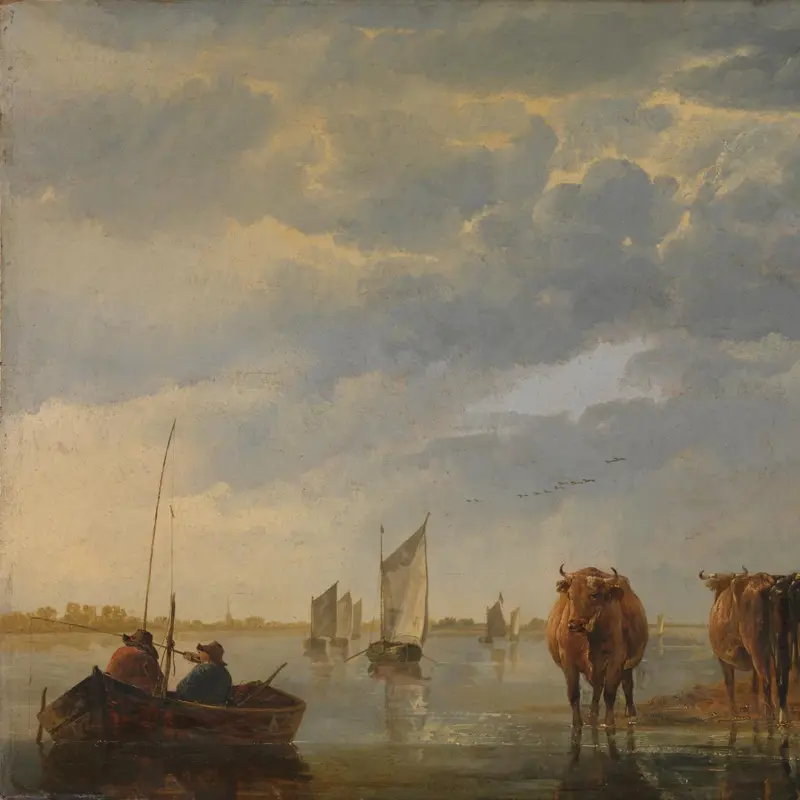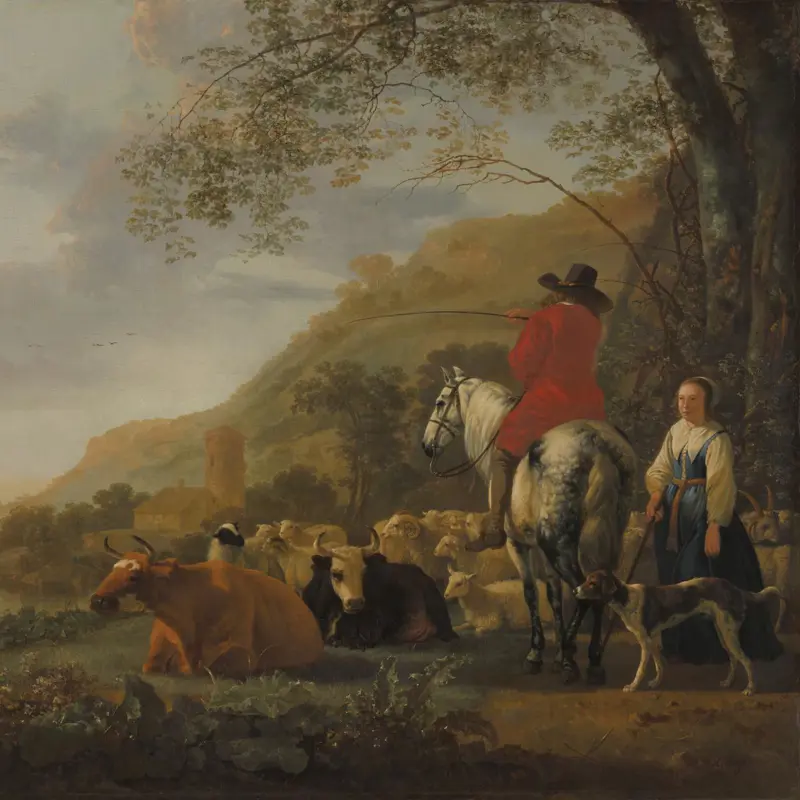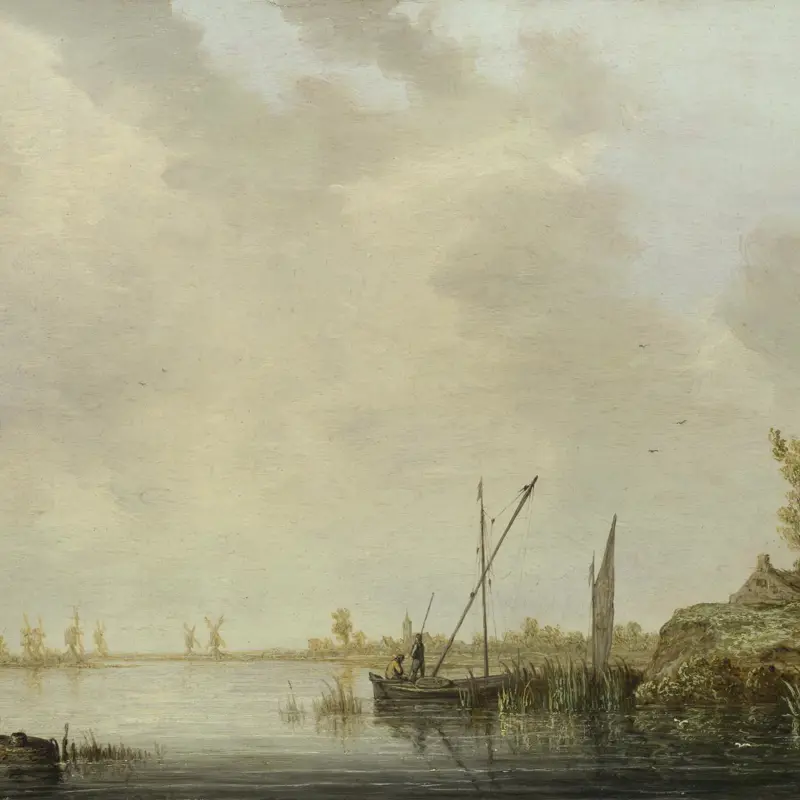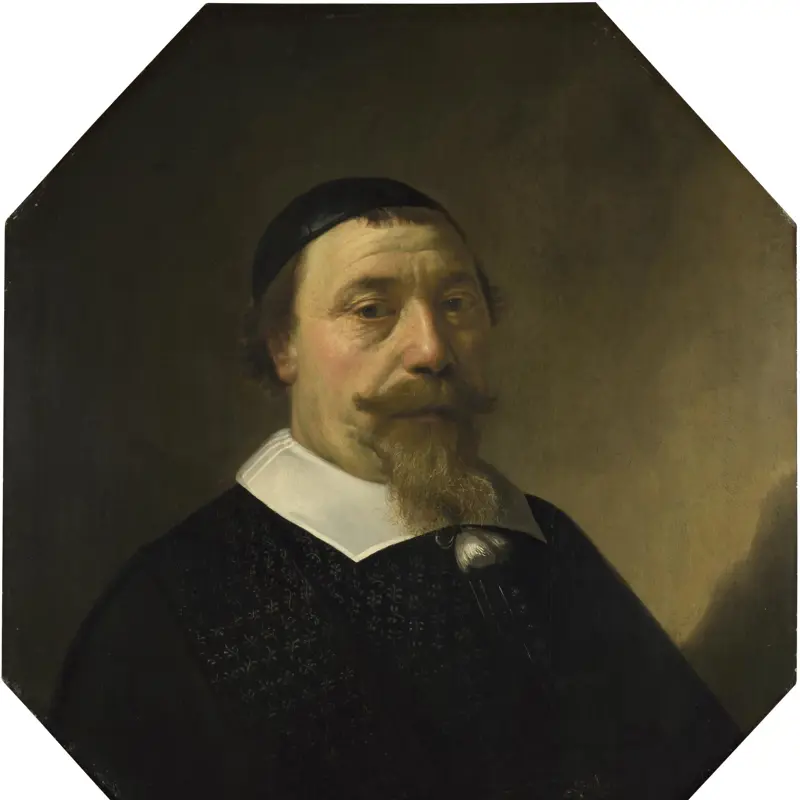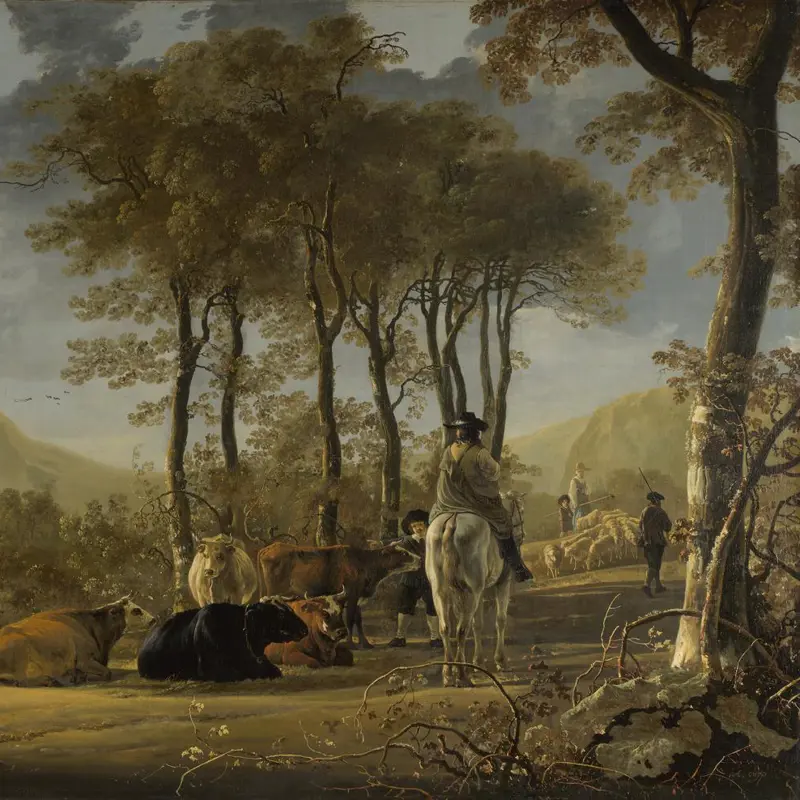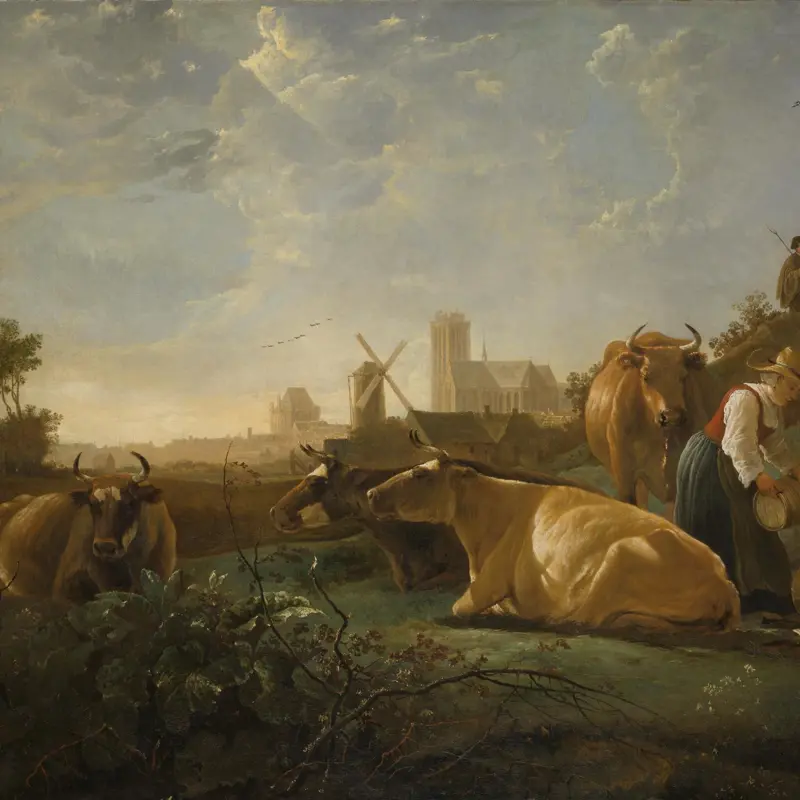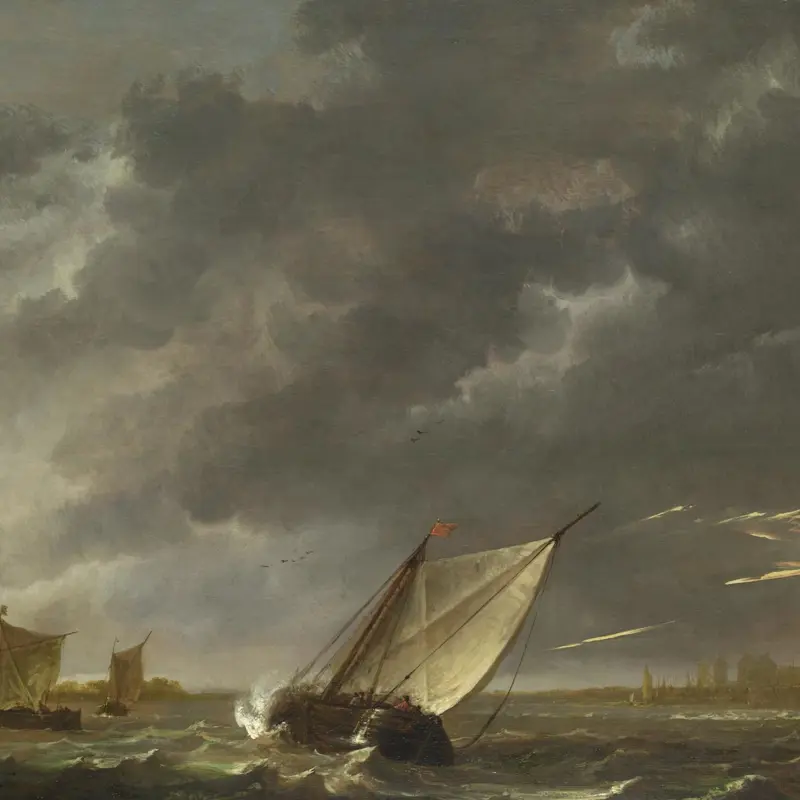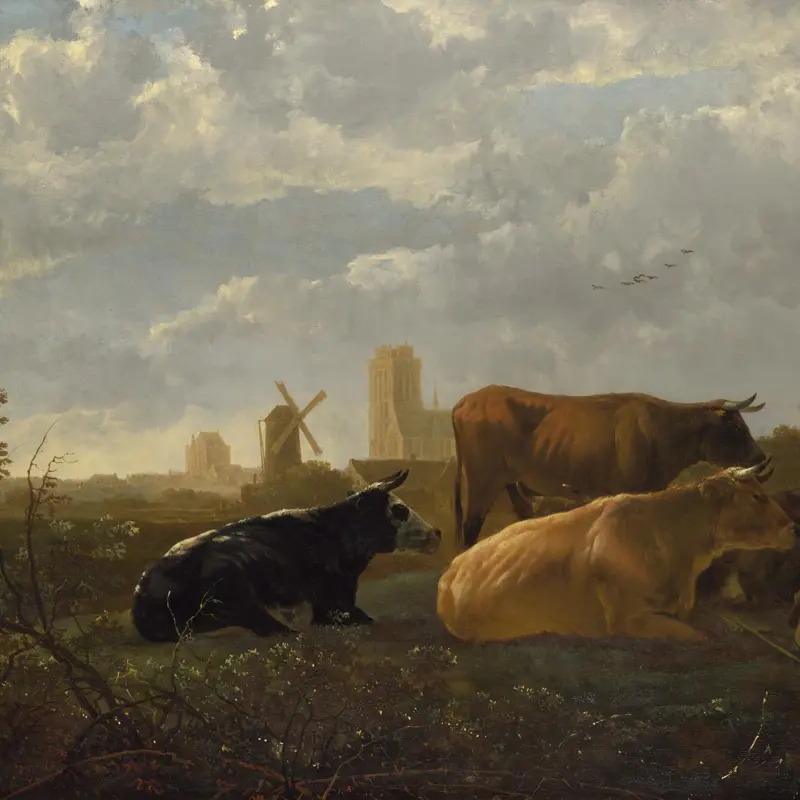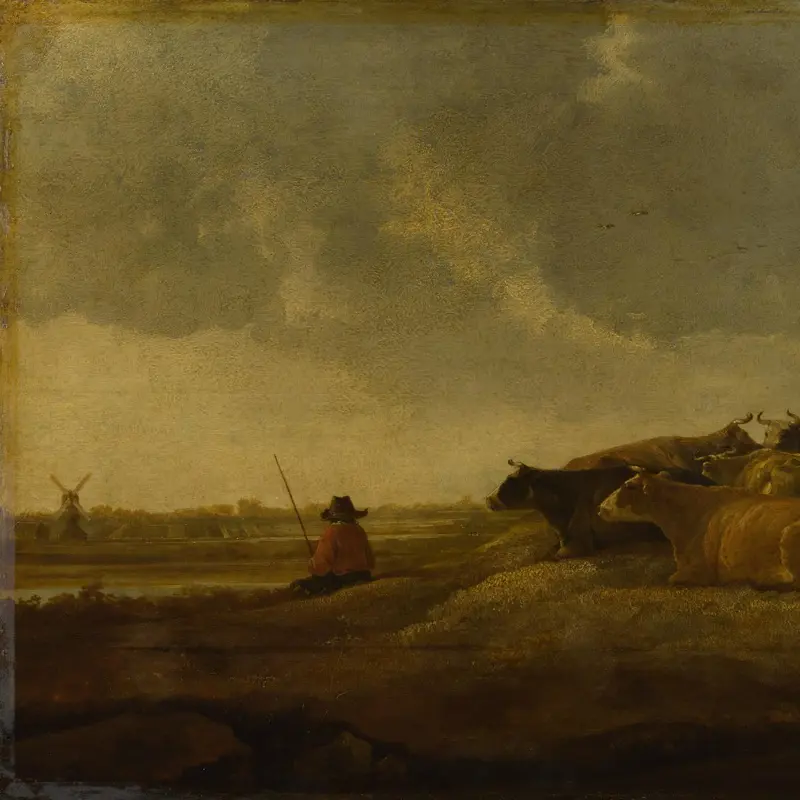Aelbert Cuyp, 'Ubbergen Castle', about 1655
About the work
Overview
The ruins of this castle seem to have been absorbed by the landscape. Aelbert Cuyp has employed the same palette of colours and the same camouflage patterns to depict the crumbling walls as he used for the autumnal woods and the hillside behind. The reflections in the still waters of the lake add to the impression that the stone towers and tumbledown ramparts are merging into their surroundings.
The scene may have had some resonance to a contemporary audience who were likely to have recognised the castle. It is the castle of Ubbergen, near Nijmegen in the Dutch Province of Gelderland. The fourteenth-century building was ruined in 1582 during the Spanish occupation of the Netherlands and as such was seen as a symbol of national independence. This painting isn’t dated but was probably made in 1655, less than a decade after the Treaty of Münster (1648), when the Dutch finally won independence from Spain.
Key facts
Details
- Full title
- Ubbergen Castle
- Artist
- Aelbert Cuyp
- Artist dates
- 1620 - 1691
- Date made
- About 1655
- Medium and support
- Oil on wood (probably oak)
- Dimensions
- 32.1 × 54.5 cm
- Acquisition credit
- Bought, 1871
- Inventory number
- NG824
- Location
- Room 19
- Collection
- Main Collection
- Previous owners
- Frame
- 18th-century French Frame
Provenance
Additional information
Text extracted from the ‘Provenance’ section of the catalogue entry in Neil MacLaren, revised and expanded by Christopher Brown, ‘National Gallery Catalogues: The Dutch School: 1600–1900’, London 1991; for further information, see the full catalogue entry.
Bibliography
-
1829
J. Smith, A Catalogue Raisonné of the Works of the Most Eminent Dutch, Flemish, and French Painters: In Which is Included a Short Biographical Notice of the Artists, with a Copious Description of Their Principal Pictures […], 9 vols, London 1829-1842
-
1844A.M. Jameson, Companion to the Most Celebrated Private Galleries of Art in London: Containing Accurate Catalogues, Arranged Alphabetically, for Immediate Reference, Each Preceded by an Historical & Critical Introduction […], London 1844
-
1854G.F. Waagen, Treasures of Art in Great Britain: Being and Account of the Chief Collections of Paintings, Drawings, Sculptures, Illuminated Mss. […], vol. 2, trans. E. Eastlake, London 1854
-
1907C. Hofstede de Groot, Catalogue Raisonné of the Works of the Most Eminent Dutch Painters of the Seventeenth Century, 10 vols, London 1907
-
1907C. Hofstede de Groot, Catalogue Raisonné of the Works of the Most Eminent Dutch Painters of the Seventeenth Century, 10 vols, London 1907
-
1960Maclaren, Neil, National Gallery Catalogues: The Dutch School, 2 vols, London 1960
-
1973K. Roberts, 'Review of the Aelbert Cuyp in British Collections Exhibition at National Gallery,1973', The Burlington Magazine, CXV, 1973, pp. 132-5
-
1975S. Reiss, Aelbert Cuyp, London 1975
-
1990C. Brown, 'Aelbert Cuyp's "River Landscape with Horsemen and Peasants"', National Art Collections Fund Review, 1990, pp. 86-90
-
1991Maclaren, Neil, revised by Christopher Brown, National Gallery Catalogues: The Dutch School, 1600-1900, 2nd edn (revised and expanded), 2 vols, London 1991
-
1992P. Marijnissen, De zichtbaere werelt: Schilderkunst uit de Gouden Eeuw in Hollands oudste stad, Zwolle 1992
-
1993A. Chong, Aelbert Cuyp and the Meanings of Landscape, Ann Arbor 1993
-
2001
C. Baker and T. Henry, The National Gallery: Complete Illustrated Catalogue, London 2001
About this record
If you know more about this work or have spotted an error, please contact us. Please note that exhibition histories are listed from 2009 onwards. Bibliographies may not be complete; more comprehensive information is available in the National Gallery Library.

